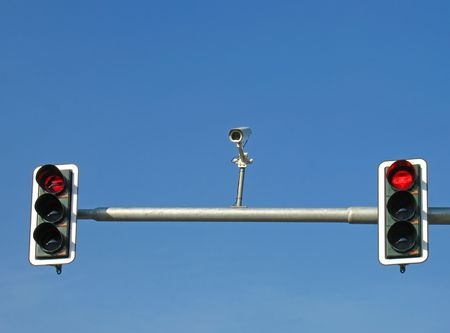Is Florida's Red Light Program A Thing Of The Past?
February 10, 2016 | Category: Automobile Accidents | Share By a vote of 4-3 on Thursday, February 4, 2016, Florida’s Senate Transportation Committee approved a measure to eliminate red light cameras. Senator Jeff Brandes said that “cities and counties use the devices as cash registers rather than for legitimate safety purposes.” His bill, if passed, would eliminate the Florida red light program.
By a vote of 4-3 on Thursday, February 4, 2016, Florida’s Senate Transportation Committee approved a measure to eliminate red light cameras. Senator Jeff Brandes said that “cities and counties use the devices as cash registers rather than for legitimate safety purposes.” His bill, if passed, would eliminate the Florida red light program.
Is profit the reason for having red light camera programs?
A 10 News (Tampa) investigation in 2015 reported that, “More cities and counties are deciding to end their red light camera programs after longer yellow lights slashed their abilities to profit off the technology.” 10 News reported that the first $83 of every $158 violation goes to the state of Florida leaving cities and counties with $75 per ticket to pay their camera contracts. Per year the cameras can cost upwards of $50,000. With shorter yellow lights, cities and counties were able to receive millions of dollars in fines. (In 2013 Collier County eliminated its red light camera program.)
How does the red light camera program work?
When a vehicle enters an intersection, a red light camera takes its picture. These cameras can be seen at many intersections in southwest Florida. They are mounted near traffic intersections and photograph license plates in order to identify red light runners. A law enforcement official will review photographic evidence to be sure there was an infraction.
The Governors Highway Safety Association statistics show that 21 states, the District of Columbia and the U.S. Virgin Islands have laws permitting some form of red light camera use. There are 10 states which prohibit their use, and 19 states with no state laws concerning red light cameras.
Who advocates for red light cameras?
The National Coalition for Safer Roads when referring to a Texas Transportation Institute 2011 study says that red light cameras are effective in preventing crash-related deaths and injury. Here are the highlights of the state’s study:
- There was an overall reduction of 633 crashes, representing an 11 percent decline
- Red light-related crashes dropped by 25 percent.
- Right angle or T-bone crashes (the most severe type) dropped by 32 percent.
- Reductions in crashes were seen across the boardon all types of roadways, including business/primary roads, farm-to-market roads, interstate access roads, state highways, and U.S. highways.
- There was a 23 percentreduction in crash frequency from one year before to one year after cameras were put into use.
What do opponents of red light cameras say?
There are opponents, one such being the National Motorists Association. The reasons they give for the red light camera programs ineffectiveness are:
- Ticket cameras do not improve safety. There is no data that proves that the cameras improve safety, reduce accidents or improve traffic flow.
- There is no certifiable witness to the alleged violation. There is no accuser for the motorist to confront, which is a constitutional right.
- Ticket recipients are not adequately notified. Most governments using the cameras send out tickets via first class mail and assumes the ticket was received. If a motorist does not pay, a warrant is issued for their arrest
- The driver of the vehicle is not positively identified.
- These devices discourage the synchronization of traffic lights. When properly done, traffic-light synchronization decreases congestion, pollution, and fuel consumption.
- There are better alternatives to cameras. Government funds should be used to improve intersections, not on ticket cameras. Sound traffic engineering such as signal and intersection improvements have lasting positive effects.
- Cameras do not prevent most intersection accidents. Motorists do not just casually drive through red lights. They probably do not see a given traffic light because they are distracted, impaired or unfamiliar with their surroundings. A camera will not change that.
- Time and again red light camera companies, as well as the cities that contract with them, have been suspected of tweaking yellow lights in such a way as to increase ticket revenue.
Whether a person is for or against the red light program, should the program be eliminated, will the accident rate at red lights increase? This question is yet to be answered.
“Intersection crashes are serious. Should you or a loved one be injured in a vehicle accident, contact the experienced team at Spivey Law Firm, Personal Injury Attorneys, P.A.,” said Fort Myers Vehicle Accident Attorney, Randall Spivey.
Fort Myers Vehicle Accident Attorney, Randall L. Spivey is a Board Certified Trial Attorney – the highest recognition for competence bestowed by the Florida Bar and a distinction earned by just one (1%) percent of Florida attorneys. He has handled over 2,000 personal injury and wrongful death cases throughout Florida. For a free and confidential consultation to discuss your legal rights, contact the Spivey Law Firm, Personal Injury Attorneys, P.A., in Lee County at 239.337.7483 or toll free at 1.888.477.4839,or by email to Randall@SpiveyLaw.com. Visit SpiveyLaw.com for more information. You can contact Spivey Law Firm, Personal Injury Attorneys, P.A.in Charlotte County at 941.764.7748 and in Collier County 239.793.7748.

